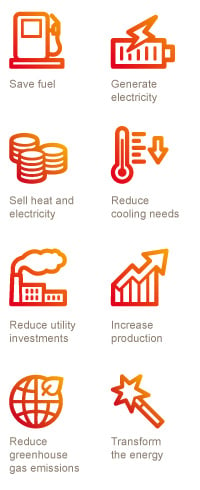There are many alternative ways to battle the rising energy prices. Internationally renowned consulting firm McKinsey made a thorough investigation into future energy needs and supply, and came to the following conclusion.
McKinsey has looked long and hard to obtain an affordable, secure energy supply while controlling climate change. Energy efficiency stands out as the single most attractive and affordable component of the necessary shift in energy consumption.
McKinsey Quarterly January 2010
The natural starting point
As common sense predicts, the first step towards lower energy costs is to start using less energy. Increasing energy efficiency is the least costly and most easily implemented solution to energy challenges for the average process plant.
A report from the International Energy Agency states the industrial plants throughout the world are using about 50% more energy than necessary. By switching to the most energy-efficient technology available, companies can make huge savings and significantly reduce environmental impact.

The total energy-saving potential from the world’s industries is estimated to be about three times the world’s total nuclear power generation.
Energy-saving investments often have short payback periods, even at much lower energy price levels than today’s. In the future, energy efficiency will most likely be a prerequisite for staying in business.
Eight ways to profit
Before investing in waste heat recovery it is important to analyse all potential gains, and assess the profitability of the investment.
There are eight ways to profit from waste heat:
Most plants have the opportunity to make use of recovered energy in several ways. The optimum mix depends on the specific characteristics of the plant, its location, and energy prices.


